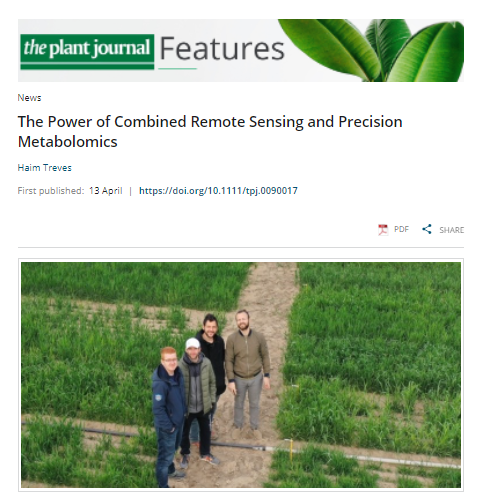Combination of field-phenotyping and metabolomics highlighted in The Plant Journal Features
Climate change and increased food demand call for an urgent need to generate improved crops, with a greater capacity to adapt and persist. In an interview with The Plant Journal, ITQB NOVA Principal Investigator of the Plant Ecophysiology and Metabolism (PEM) lab and GREEN-IT member Rubén Vicente discusses how the lab’s research is contributing to solutions to fight these global issues.
At the PEM lab, the combination of field-phenotyping and plant metabolomic techniques is not unheard of. “We combine both things since in order to clarify what’s behind a given phenotype; we need to understand the metabolic mechanism of the response and not just follow grain yield,” explains Rubén Vicente to The Plant Journal. However, it is the researchers’ close relationship with breeders and farmers that allows for an accurate translation of this knowledge into application. “(…) we work closely with breeders and actually support breeding programs with high-throughput phenotyping to cover many growth plots and select better-performing and more climate-tolerant varieties very fast,” says the researcher, “(…) the knowledge is flowing directly to the farmers by releasing the best varieties each year on a seasonal and regional basis, and this works vice versa when breeders and sometimes even farmers raise the need to develop a phenotyping technique for a specific trait or organ based on their experience”.
Also discussed is the fact that as cereals are no longer being studied at the whole plant level alone, but are rather analyzed by organs, this leads to the finding of new interesting targets for breeders. Such is the case of the ear organ - the grain-bearing tip part of the stem in wheat and other cereals -, whose photosynthetic performance has been linked to yield, and has therefore also been a subject of interest for the PEM lab. “Our work and others clearly show that canopy and, particularly, ear photosynthesis matters!” argues Rubén.
To read the full interview please follow the link.



